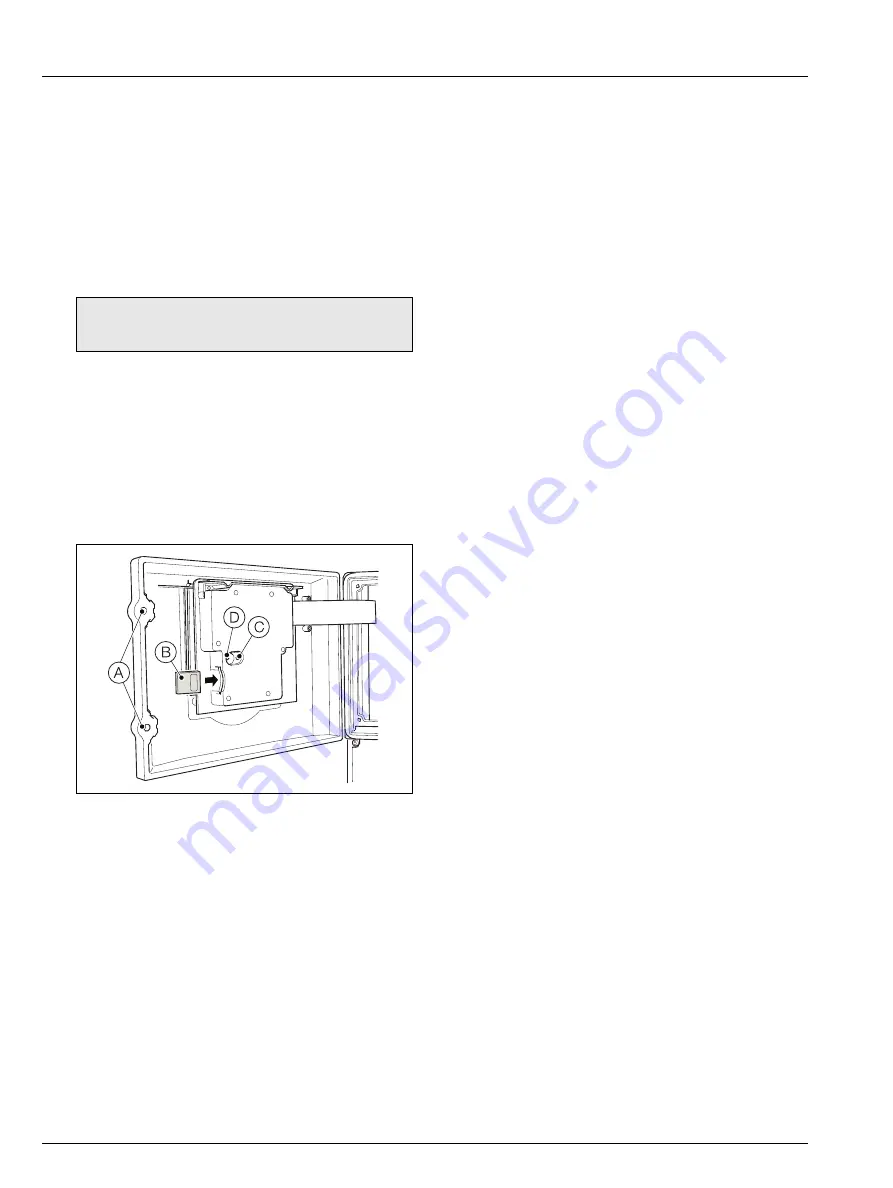
Navigator 600 Silica
Single-stream
9 Logging
54
IM/NAV6S/SS–EN Rev. E
9.1 SD Cards
There are two methods of archiving to an SD card:
An SD card is kept in the analyzer
Data is copied automatically to the SD card at set
intervals. The SD card is then swapped periodically for an
empty one.
Depending on how the configuration has been set, data is
added either to the card until it is full and then stops
archiving or the oldest data on the SD card is overwritten
by the newest.
It is advisable to back-up critical data stored on an SD
card regularly. The analyzer's internal memory provides a
buffer for the most recent data so if data stored on an SD
card is lost, it can be re-archived – see Section 9.2,
page 55.
Data is copied to an SD card when required
An SD card is inserted into the analyzer and a prompt is
displayed asking the user to select the unarchived data to
be copied.
To access the SD Card:
1. Ensure the analyzer is offline.
2. Use a large flat-headed screwdriver to release the two
door catches
A
.
3. Open the door and insert the SD card
B
.
The red LED
C
is lit when the SD card is in use by the
analyzer.
4. To remove the SD card, If the red LED is lit, press the
button
D
and wait until the LED goes out.
5. Pull the SD card out of its socket. The SD card can then
be inserted into an appropriate card reader attached to a
PC and the data downloaded.
Note.
To set up the analyzer to archive data to an SD
card automatically – see Section 5.7.3, page 38.
Fig. 9.2 SD Card Removal






























